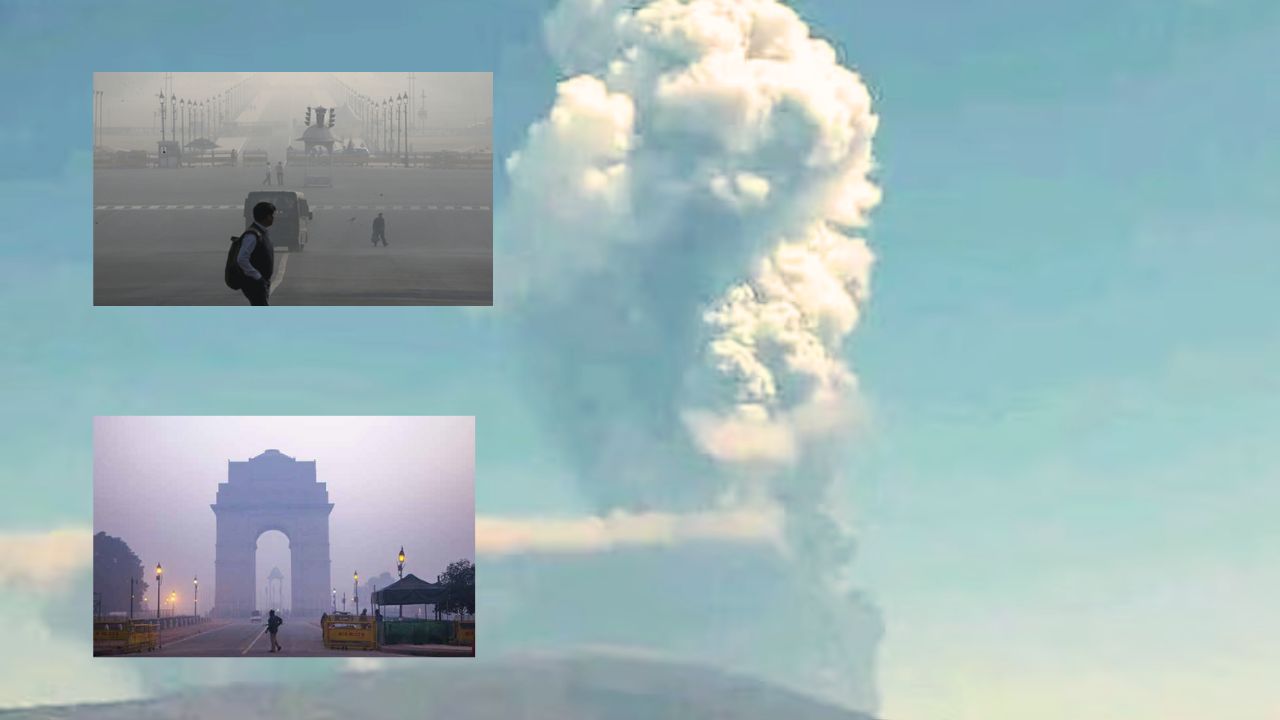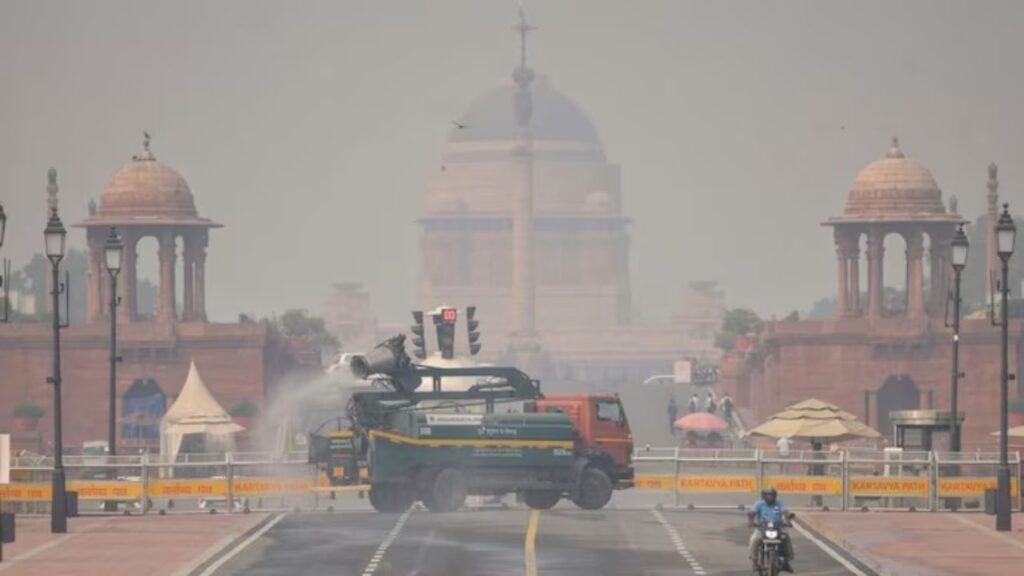 English
English

According to the Air Quality Early Warning System, pollution levels may worsen between November 26 and 28, and the AQI is expected to fluctuate between ‘severe’ and ‘very poor’ over the next six days.

Pollution levels surge in Delhi amid concerns over ash from the Ethiopian volcano
New Delhi: Air pollution levels in the national capital continue to rise steadily. On Tuesday, the city’s overall Air Quality Index (AQI) was recorded at 353, placing it in the ‘very poor’ category for the 12th consecutive day. Despite a slight improvement compared to Monday, the air quality remains a serious concern. According to the Air Quality Early Warning System, pollution levels may worsen between November 26 and 28, and the AQI is expected to fluctuate between ‘severe’ and ‘very poor’ over the next six days.
Dip in temperature along with worsening air
According to the IMD, the minimum temperature on Tuesday was 9°C, which is 2.3 degrees below normal. The maximum temperature settled at 25.1°C - the lowest maximum recorded so far this season. Light to moderate fog is likely on Wednesday.
Volcanic eruption in Ethiopia: Impact on India?
Following the eruption of the shield volcano Hayli Gubbi in Ethiopia’s Afar region on Sunday, a massive ash plume rose up to 45,000 feet. The ash drifted toward the Red Sea and further in the direction of China. The IMD stated that the plume is expected to move away from India by Wednesday evening, but forecast models have indicated possible impacts on Gujarat, Delhi-NCR, Rajasthan, Punjab, and Haryana. Experts believe that the presence of ash particles in the air could further worsen pollution levels.

AQI in Delhi remains in the ‘very poor’ category (Image: Google)
Sources of pollution
According to the Decision Support System (DSS) of the Indian Institute of Tropical Meteorology (IITM), vehicular emissions were the largest contributor to Delhi’s pollution on Tuesday, accounting for 19.6 percent. The impact of stubble burning was recorded at just 1.5 percent. Similar levels are expected on Wednesday.
CPCB data: Rohini remains in ‘severe’ category
As per the CPCB’s Sameer app, out of Delhi’s 38 active monitoring stations, Rohini was the only location where the AQI touched 401 — falling in the ‘severe’ range. On Monday, air quality at 15 stations had reached severe levels, but Tuesday saw a slight improvement in overall conditions.
522 cases of stubble burning in UP
According to the latest satellite data, 522 stubble-burning incidents were recorded in Uttar Pradesh on Sunday. Three cases were reported in Punjab and one in Haryana. Experts say that although the contribution of stubble burning remains low, its impact can still influence air quality under prevailing weather conditions.
Beta feature